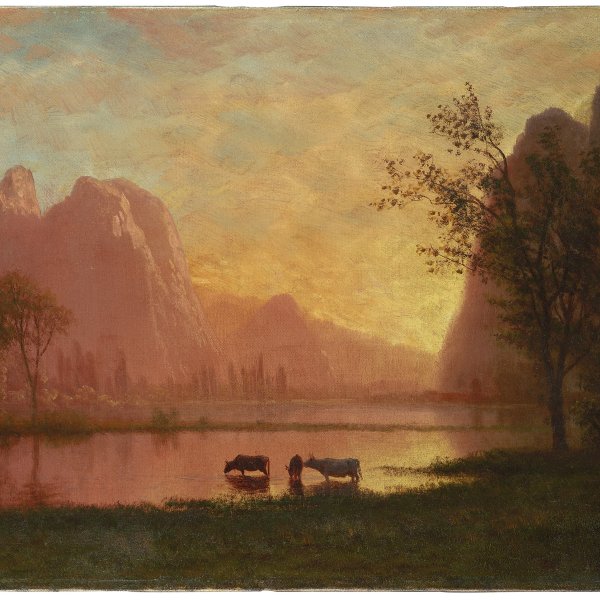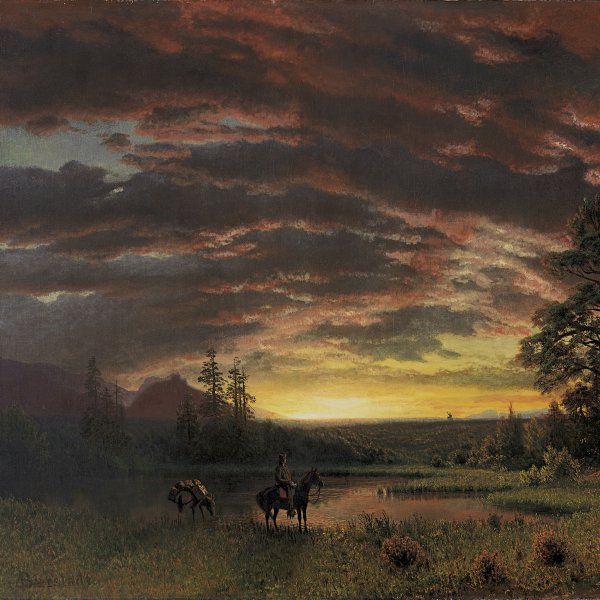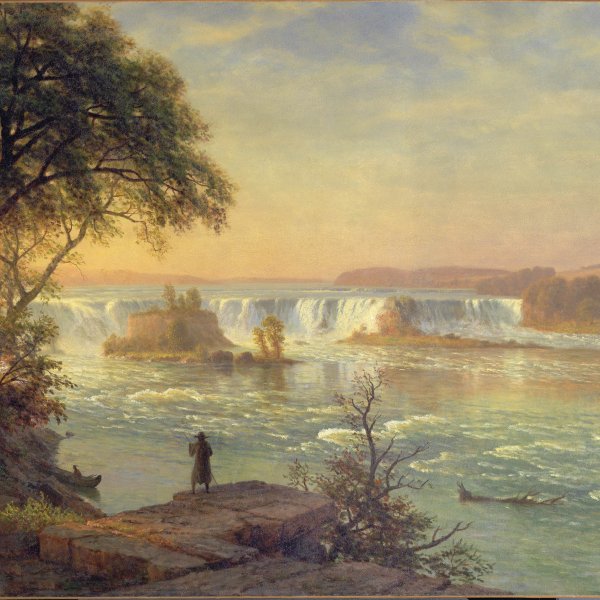Albert Bierstadt
Solingen, 1830-New York, 1902
The son of German immigrants, Albert Bierstadt was only two years old when he arrived in New Bedford, Massachusetts. He started out as a self-taught painter and in 1853 decided to return to Europe to train at the Kunstakademie in Düsseldorf. There he came into contact with other American painters such as Emanuel Leutze and Worthington Whittredge. He travelled around Germany, Switzerland and Italy with Whittredge and made many sketches for the paintings that were shown on his return to the United States in 1857 at the National Academy of Design, of which he was elected an honorary member shortly afterwards.
In 1859 Bierstadt took part in the expedition led by Colonel Frederick W. Lander to open up a new railroad route to the Pacific Ocean. He made sketches of the Rocky Mountains and took stereoscopic photographs of the natives. Although he was not the first painter to depict these mountains, his new paintings earned him fame, first in New Bedford, and later in New York. His European training and experience in painting the mountainous Alpine landscape influenced his perception of the American mountains, which came to be called the “American Alps.”
Bierstadt set out on his second western journey in 1863 accompanied by Fitz Hugh Ludlow, a famous writer who later published an account of this adventure in The Heart of the Continent. On this second occasion he visited the Pacific coast, Yosemite Valley and part of the state of Oregon. The sketches from life he made during this trip were the basis for his most ambitious paintings.
Accompanied by his wife, Bierstadt travelled to Europe again in 1867 and exhibited some of his most famous paintings in London. On returning, they both went to San Francisco via the recently opened railway line and again visited Yosemite Valley, which had so impressed the artist on his previous trip. Throughout his life Bierstadt also travelled to Yellowstone Park, Alaska, the Rocky Mountains in Canada and even to the tropics.
The huge fame he enjoyed for much of his life gradually faded as the new Impressionist movement gained ground in America. He died in 1902 in oblivion.
In 1859 Bierstadt took part in the expedition led by Colonel Frederick W. Lander to open up a new railroad route to the Pacific Ocean. He made sketches of the Rocky Mountains and took stereoscopic photographs of the natives. Although he was not the first painter to depict these mountains, his new paintings earned him fame, first in New Bedford, and later in New York. His European training and experience in painting the mountainous Alpine landscape influenced his perception of the American mountains, which came to be called the “American Alps.”
Bierstadt set out on his second western journey in 1863 accompanied by Fitz Hugh Ludlow, a famous writer who later published an account of this adventure in The Heart of the Continent. On this second occasion he visited the Pacific coast, Yosemite Valley and part of the state of Oregon. The sketches from life he made during this trip were the basis for his most ambitious paintings.
Accompanied by his wife, Bierstadt travelled to Europe again in 1867 and exhibited some of his most famous paintings in London. On returning, they both went to San Francisco via the recently opened railway line and again visited Yosemite Valley, which had so impressed the artist on his previous trip. Throughout his life Bierstadt also travelled to Yellowstone Park, Alaska, the Rocky Mountains in Canada and even to the tropics.
The huge fame he enjoyed for much of his life gradually faded as the new Impressionist movement gained ground in America. He died in 1902 in oblivion.







